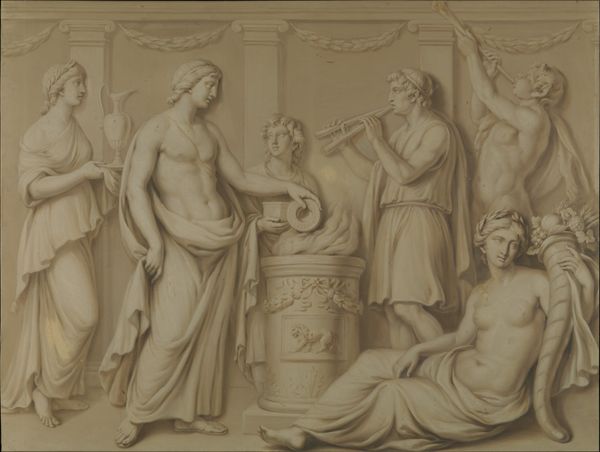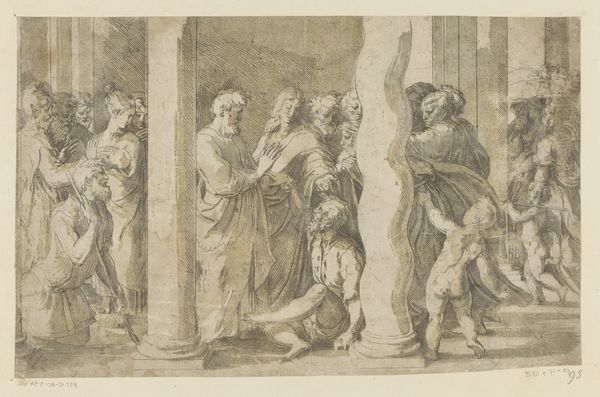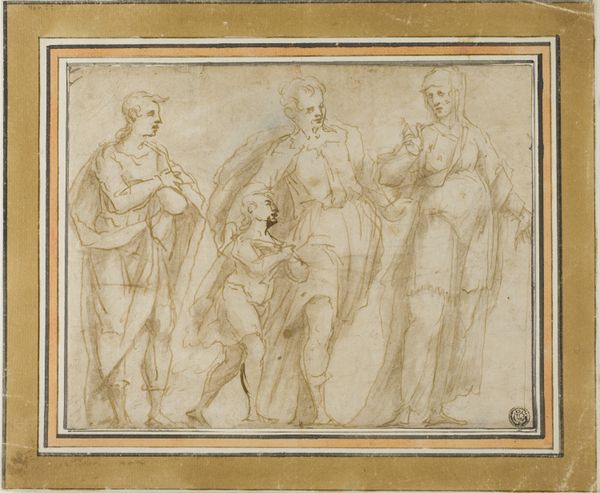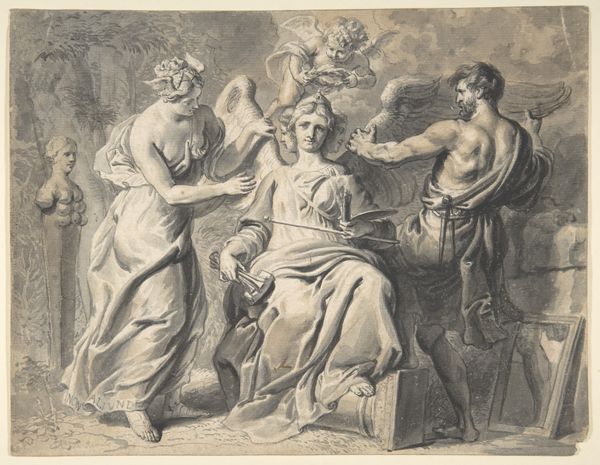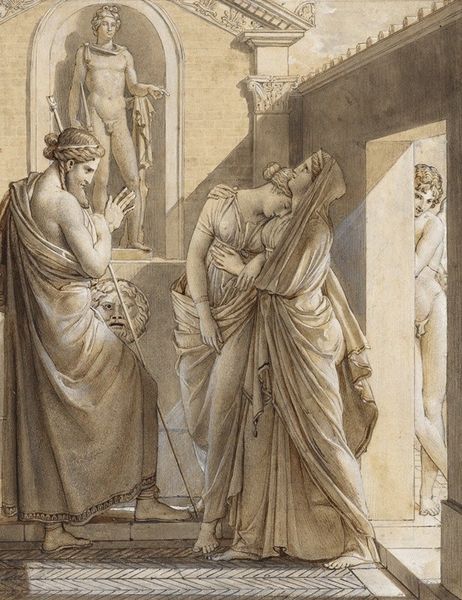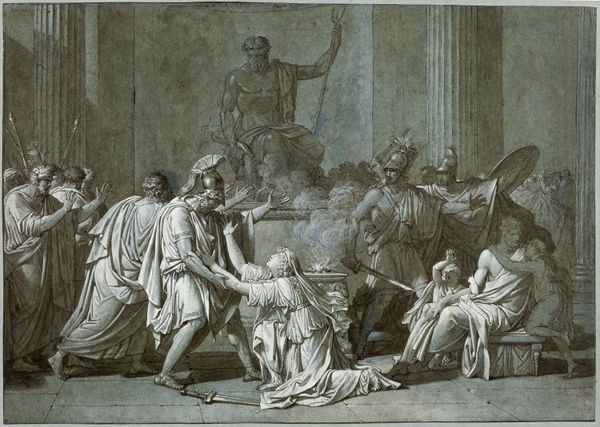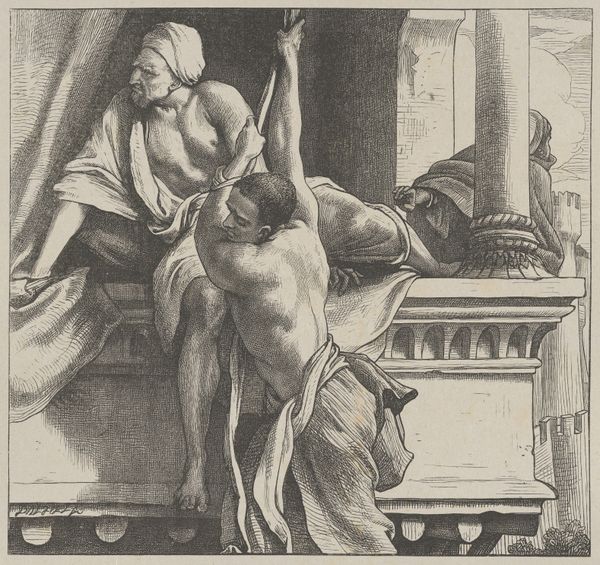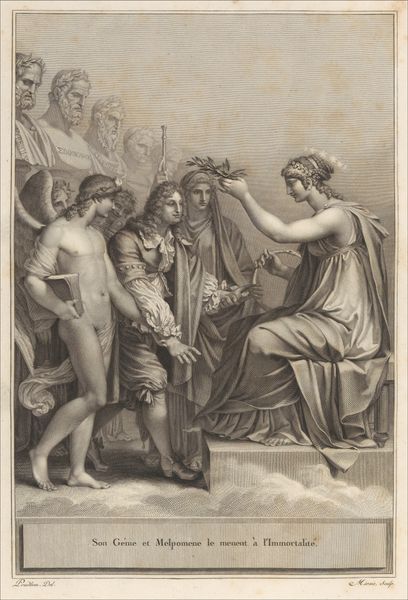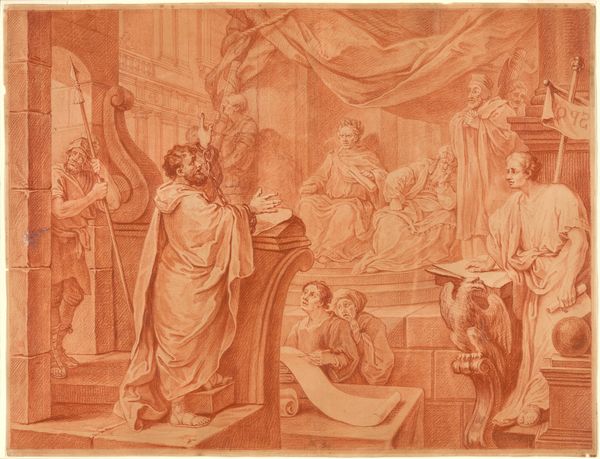
En siddende mand og to stående kvindefigurer 1743 - 1809
0:00
0:00
drawing, ink, pen, charcoal
#
portrait
#
drawing
#
neoclacissism
#
classical-realism
#
charcoal drawing
#
figuration
#
ink
#
pen
#
portrait drawing
#
charcoal
#
history-painting
#
academic-art
Dimensions: 186 mm (height) x 240 mm (width) (bladmaal)
Curator: Nicolai Abildgaard’s "En siddende mand og to stående kvindefigurer," created sometime between 1743 and 1809, invites us to consider its narrative and symbolic dimensions within a neoclassical framework. Editor: The ink and charcoal work arrests you immediately. The brown washes create depth. You want to reach out and touch the page. It's as if the image emerged organically. Curator: Exactly. Abildgaard was deeply engaged with the historical narratives of ancient Greece and Rome. Notice the idealized, almost allegorical figures. They signify specific values— perhaps wisdom and beauty conferring with strength. This work highlights not just historical depiction, but a reflection of societal values through a carefully constructed tableau of gender roles and power dynamics. Editor: Indeed, but observe how he works with ink and charcoal; you'll find labor is involved when replicating images on the page for dissemination or personal use. I appreciate Abildgaard's craft here: the gradations of the ink wash, which yield a sense of texture in the draping fabric. We must recognize this work’s material history— it’s tied to both commerce and the spread of knowledge, all while reflecting specific consumption tastes within Danish society. Curator: True. However, one can't ignore how the two standing female figures frame the seated male, alluding to gendered positions. This placement is intentional, hinting at a complex, perhaps contentious relationship between power, knowledge, and gender within the broader Enlightenment discourse. Editor: But it is all lines! It has physical form because he wills it. The act of creation and what is created are tied through the use of base elements. Curator: Right. Abildgaard's drawing offers a fascinating view into not only classical aesthetics but also a world negotiating gender, history, and power through accessible visuals. Editor: So, in sum, while contemplating power and gender dynamics through neoclassical images, let's acknowledge that it also reflects how artistic skills are always tied to materials and the physical creation itself. It’s both idea and labor!
Comments
No comments
Be the first to comment and join the conversation on the ultimate creative platform.

